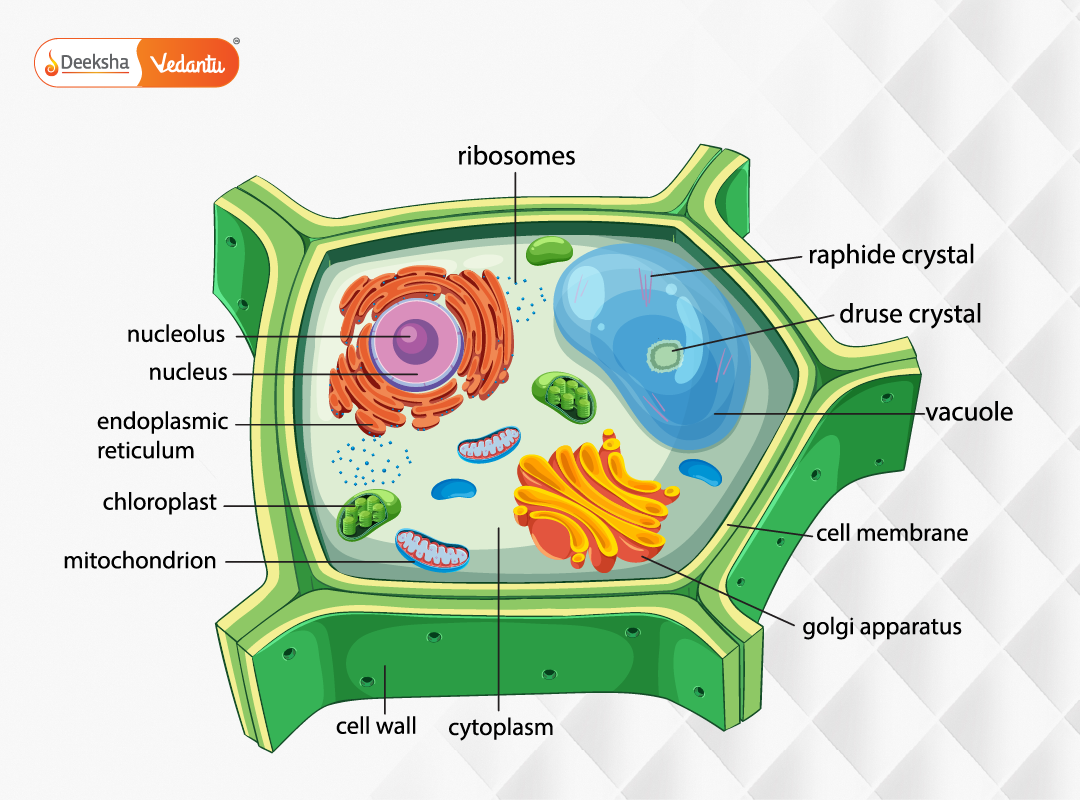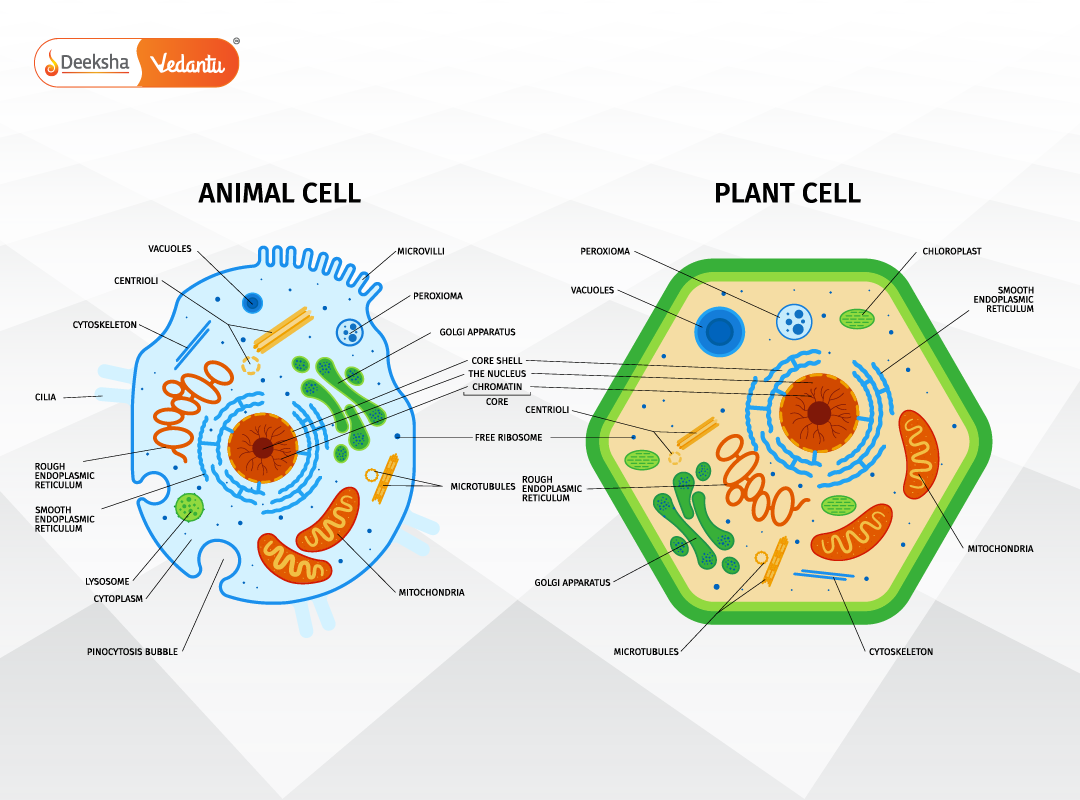Understanding the plant cell is essential for grasping core biology topics in Class 10. The plant cell structure reveals how plants carry out complex biological activities through specialized parts called organelles. Unlike animal cells, plant cells contain unique components that enable photosynthesis, provide structural support, and store essential nutrients. In this comprehensive guide, we’ll dive into each part of the plant cell, explain its structure, and describe the functions of plant cell organelles with clarity and examples. Whether you’re preparing for your board exams or simply exploring biology, this article is designed to enhance your conceptual understanding.
Before we explore the components in detail, it’s crucial to remember that all living organisms are made up of cells – the fundamental unit of life. These cells can be broadly categorized into prokaryotic and eukaryotic cells. Plant cells belong to the eukaryotic category because they possess a clearly defined nucleus and membrane-bound organelles. To understand this difference better, visit our complete guide on Prokaryotic and Eukaryotic Cells.
Plant Cell Structure: A Closer Look at Its Components
A plant cell is generally rectangular or polygonal due to the presence of a rigid outer cell wall. Within this outer wall lies a well-organized set of internal structures that carry out specific functions. A typical diagram of a plant cell features the following components:

- Cell Wall
- Cell Membrane
- Nucleus
- Cytoplasm
- Chloroplasts
- Vacuole
- Mitochondria
- Golgi Apparatus
- Endoplasmic Reticulum (Rough and Smooth)
- Ribosomes
You can view a fully labeled illustration and description in our article on the Plant Cell.
1. Cell Wall
The cell wall is a thick, rigid structure made primarily of cellulose. It is located outside the cell membrane and serves as a protective layer that also maintains the shape of the cell.
Function: Provides mechanical strength, protects against mechanical injury, supports plant structure, and regulates cell growth by controlling expansion.
2. Cell Membrane
The cell membrane, also known as the plasma membrane, lies just beneath the cell wall. It is semi-permeable and made up of a phospholipid bilayer.
Function: Controls the entry and exit of materials such as ions, nutrients, and waste, thereby maintaining a stable internal environment (homeostasis).
3. Nucleus
The nucleus is a spherical or oval-shaped organelle surrounded by a nuclear membrane. It houses chromatin (DNA and proteins) and a nucleolus.
Function: Regulates all cellular activities, from protein synthesis and cell growth to division and heredity.
4. Cytoplasm
The cytoplasm is a gel-like substance that fills the cell interior. All other organelles float in this matrix.
Function: Acts as a medium for biochemical reactions and facilitates the movement of materials within the cell.
5. Chloroplasts
Chloroplasts are disc-shaped organelles containing green pigment chlorophyll, essential for capturing sunlight for photosynthesis.
Function: Converts solar energy into chemical energy stored in glucose through the process of photosynthesis.
Photosynthesis Equation:
6CO₂ + 6H₂O + sunlight → C₆H₁₂O₆ + 6O₂
Learn how chloroplasts help plants produce their own food in our overview of Cell Organelles.
6. Vacuole
The vacuole is a large, membrane-bound sac filled with cell sap. In mature plant cells, it occupies up to 90% of the cell volume.
Function: Stores water, nutrients, and waste products. It also helps maintain turgor pressure, which supports the plant’s upright structure.
7. Mitochondria
Also known as the “powerhouse of the cell,” mitochondria generate the energy needed for various cellular processes.
Function: Perform cellular respiration and generate ATP (adenosine triphosphate), the energy currency of the cell.
For deeper insights into energy production, visit our guide on Mitochondria.
8. Golgi Apparatus
The Golgi apparatus consists of flattened membrane-bound sacs called cisternae. It is often located near the endoplasmic reticulum.
Function: Modifies, packages, and transports proteins and lipids, preparing them for secretion or storage.
9. Endoplasmic Reticulum (ER)
- Rough ER has ribosomes on its surface and synthesizes proteins.
- Smooth ER lacks ribosomes and is involved in lipid metabolism and detoxification.
Function: Facilitates the synthesis and transport of proteins and lipids within the cell.
10. Ribosomes
Tiny, spherical structures found either floating freely in the cytoplasm or attached to rough ER.
Function: Act as the site of protein synthesis, translating genetic information into functional proteins.
Comparison with Animal Cells
Understanding the differences between plant and animal cells is crucial for recognizing what makes plant cells uniquely suited to their functions.
| Feature | Plant Cell | Animal Cell |
| Cell Wall | Present | Absent |
| Chloroplast | Present | Absent |
| Vacuole | One large central vacuole | Multiple small or no vacuoles |
| Shape | Typically rectangular | Typically round or irregular |
For more on these differences, explore our article on Cells.

Functions of Plant Cell Organelles
Each organelle has a specialized role, and together, they keep the plant cell functioning optimally:
- Energy Processing: Chloroplasts produce food; mitochondria release energy from it.
- Protein and Lipid Production: Ribosomes, ER, and Golgi bodies ensure essential molecules are synthesized and transported.
- Waste Disposal and Storage: Vacuoles store useful substances and isolate harmful materials.
- Control Center: The nucleus coordinates all activities and carries genetic information.
For a comprehensive overview of cellular components and their interactions, explore our full article on Cell Organelles.
Role in Photosynthesis and Plant Growth
Plant cells are integral to photosynthesis and the overall development of plants. Key processes include:
- Photosynthesis by Chloroplasts: Converts light energy into glucose.
- Respiration by Mitochondria: Breaks down glucose to release usable energy.
- Growth Controlled by Nucleus: Directs protein synthesis and cell division.
- Structural Support from Cell Wall: Ensures mechanical stability and optimal growth direction.
This interconnected activity enables plants to grow, reproduce, and produce oxygen for life on Earth.
FAQs
1. What is the function of the cell wall in plant cells?
It gives the cell a fixed shape, prevents over-expansion due to water absorption, and provides protection against physical damage.
2. What are the main parts of a plant cell?
Essential components include the cell wall, membrane, cytoplasm, nucleus, chloroplasts, mitochondria, vacuole, ER, Golgi apparatus, and ribosomes.
3. How do plant cells differ from animal cells?
Plant cells have a cell wall, chloroplasts, and a large central vacuole – features absent in animal cells.
4. What is the function of chloroplasts?
Chloroplasts carry out photosynthesis, enabling plants to synthesize food from sunlight, water, and carbon dioxide.
5. Are all plant cells the same?
No, different types of plant cells have specialized roles such as photosynthesis, water transport (xylem), food transport (phloem), and storage.
Conclusion
Studying the structure and function of plant cells provides a vital understanding of how plants live, grow, and contribute to the ecosystem. From energy production in mitochondria to food synthesis in chloroplasts, each component of the plant cell works in synergy to sustain life. Recognizing the functions of plant cell organelles not only prepares students for academic success but also fosters appreciation for the intricacies of life processes.
To deepen your understanding, explore our detailed modules on Cells, Plant Cells, and Cell Organelles. A solid grasp of plant cell biology lays the foundation for more complex topics in Class 11 and 12, and beyond into biotechnology and life sciences.
Table of Contents






Get Social